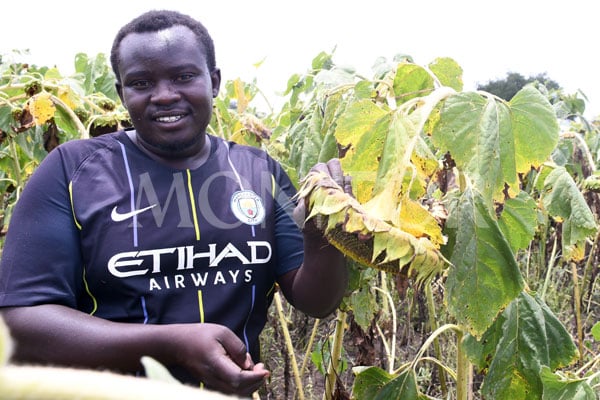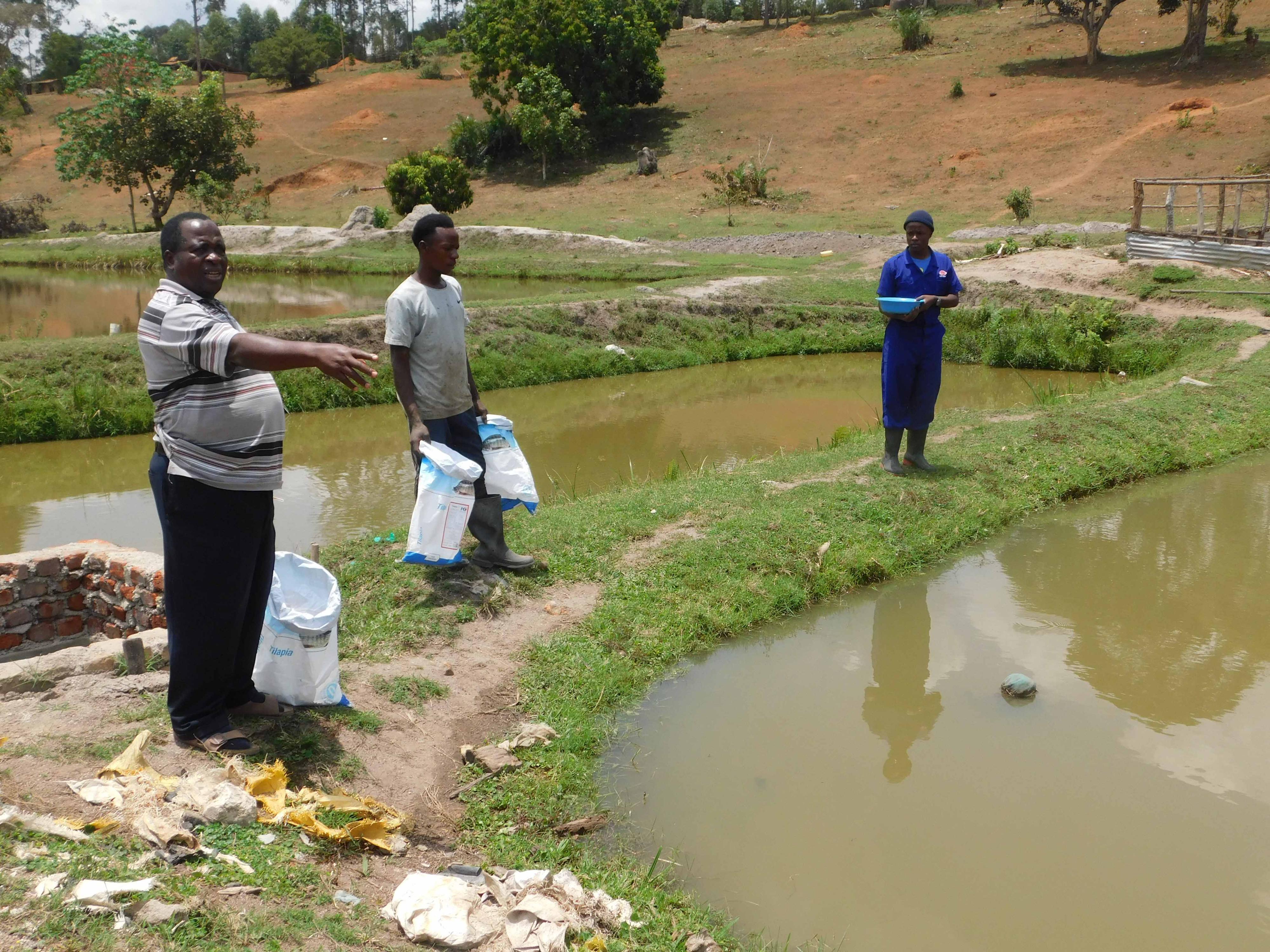Prime
How smart farming is lifting Lomakol

A farm attendant at Lomakol’s farm explains how to harvest sunflower. Photo/Simon Peter Emwamu
What you need to know:
- On his 300 acre farm in Lomuria village, Lorengchora Sub-county, Jimmy Lomakol, says amidst all odds, he has this season harvested 1,000 bags of maize grain, 100 bags of sunflower seed, 100 bags of soybean, 10 bags of garlic, with more 30 acres of maize, sunflower, and sorghum, just three weeks shy from the harvest date.
Despite the negative perception that farming cannot be lucrative in Karamoja as it is in other regions, Jimmy Lomakol, a resident of Lorengchora Sub-county, Napak District has turned around the odds by making the parched land along the greenbelt into a food basket.
Lomakol’s feat comes at a time when Karamoja Sub-region is heavily feeling the effect of food shortages as result of insecurity.
On his 300 acre farm in Lomuria village, Lorengchora Sub-county, the retired private sector worker, now turned a business consultant, says against all odds, he has this season harvested 1000 bags of maize grain, 100 bags of sunflower seed, 100 bags of soybean, 10 bags of garlic, with more 30 acres of maize, sunflower, and sorghum, just three weeks shy from the harvest date.
Capital
Lomakol, a former member of Uganda Farmers Association (UFA), says when he picked his NSSF savings three years ago, he preferred to invest it in revolutionising farming in the greenbelt of Karamoja.
He says he used all his NSSF savings to acquire two tractors and their entire accessories because he needed to carry out farming in Karamoja and change attitude on what the region has long been known for.
According to Lomakol, he always gets a bleeding heart when he sees a lot of negativity being said about Karamoja, “it is not true that certain foods cannot grow in Karamoja, we receive between 600 –1200miltres of rain almost the same rainfall partner with Teso, Lango and Acholi, what we need is mindset change.”
“The mindset change should start with the NGO world, their interventions have failed Karamoja, and the truth is the people of Karamoja should shape their destiny, the issue of wanting freebies will not do us any better,” says Lomakol.
“My dream is to teach our people here that we can use our own land to produce food, this season alone , I will be able to recover almost all my NSSF savings I used to start this venture,” Lomuria explains.
Enterprises
In his farm, he says he has tried to grow cowpeas, and it has shown prospects of even doing better, adding that he has taught his children to be optimistic.
“Most of my children, children of my relatives whom I have educated and undertaken agriculture courses, must become an example to the rest of Karamoja, they will have to make use of land to produce food,” he says.
Lomakol confirms, Rwanda, western Uganda are looking at the Karamoja sorghum, Mukwano is equally looking at the sunflower prospects. “This is the golden opportunity we must capture, by ably blending cattle keeping and farming, that is the challenge, I have put before our political leaders to spearhead,” he says.
Expansion
He says come next year , his dream is to expand his farm from 300 acres to 400 acres, adding that if each district in Karamoja just had 10 people with the kind of his ambition for farming in Karamoja, the issue of food insecurity will be a hearsay.
Lomakol says maize cultivation is the way to go in Karamoja greenbelt, “For three month between March and June when rains are intense in the green spaces of Karamoja, a serious farmer will have a good quantity of harvest to take to the market,” he says.
How he does it
Lomakol says to succeed in farming in Karamoja, early preparation for the fields is so cardinal, “November, December rains should be used to plough the fields, between January and February, the little rains that set in can also be used to farrow.”
He says that mid-March, the first rains should be used to plant, adding that the success he has had, has tremendously relied on his ability to understand when to plant.
Lomakol adds that most grains have shown signs of doing well in Karamoja’s greenbelt region, “We literally do not need to rely on hand-outs from other regions when we have the greenbelts which can produce for us metric tonnes of grains.” He adds that because most soils in Karamoja are still virgin, weeding is done once. “That is the sole beauty I have seen in my engagement as a commercial farmer, for maize, sorghum, soybean and sunflower,” he says.
Lomakol says he expects more than Shs100m from this year’s engagement as commercial farmer.
Expansion
Jimmy Lomakol says come next year, his dream is to expand his farm from 300 acres to 400 acres, adding that if each district in Karamoja just had 10 people with the kind of his ambition for farming in Karamoja, the issue of food insecurity will be a hearsay.




